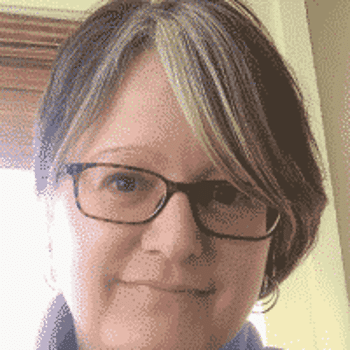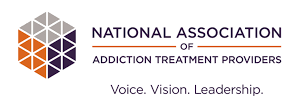Sleeping too much? Learn the differences between hypersomnia and narcolepsy.
Article at a Glance:
When it comes tohypersomnia vs. narcolepsy,there are some key factors that help differentiate the two conditions.
- Hypersomnia and narcolepsy both involve daytime sleepiness and the urge to sleep excessively.
- Both conditions can be treated through the use of medications and lifestyle adjustments.
- Narcolepsyis a more severe and rare condition that involves REM changes, sleep disruption and neurological factors like cataplexy.
- Symptoms of hypersomniaand narcolepsy should be explored with a medical professional to rule out other physiological conditions.
Hypersomnia vs. Narcolepsy
Sleep is a precious commodity, and we rely on it for physical and emotional regeneration. When it is disrupted, we experience many complex issues that range from fatigue to cognitive impairment.
We often hear about peoplestruggling with insomnia, which is when someone has trouble falling asleep. A lesser-known condition ishypersomnia, or excessive sleeping. People with hypersomnia feel as if they cannot get enough sleep. Even after extra hours of sleep, people with this condition are tired and lethargic. Napping only worsens the condition, since it isn’t actually a lack of sleep that is causing the problem.
Narcolepsyis another type of sleep disorder that involves excessive sleep. With this condition, the need to sleep comes suddenly and without warning during waking hours. The maindifference between narcolepsy and hypersomnialies in the origins of each disorder, how they manifest and how they impact quality of life.
New Year, New Beginnings.
Whether you are struggling with addiction, mental health or both, our expert team is here to guide you every step of the way. Don’t wait— reach out today to take the first step toward taking control of your life.
Causes of Excessive Daytime Sleepiness
Excessive daytime sleepinesscan be caused by a number of factors. Since excessive daytime sleepiness can be a sign of a physical health issue, physicians should first rule out organic causes. Medical professionals often use theEpworth Sleepiness Scaleto determine the severity and circumstances of daytime sleepiness.
This assessment, along with the patient’s blood tests and lifestyle information, helps doctors identify potential causes and solutions for excessive daytime sleepiness. Depending on the results of these tests, medical providers may order a sleep study to determine the quality of sleep at night and the possibility of sleep apnea.
Excessive daytime sleepiness sometimes occurs as a result of mental health challenges.Depressioncaninfluence sleep patternssignificantly. There is evidence ofgenetic heritabilitybetween excessive daytime sleepiness and depression, so some people may be predisposed to one or both conditions. Daytime sleepiness can also be a predicting factor for narcolepsy, depending on the symptoms.
Differences Between Idiopathic Hypersomnia and Narcolepsy
There are some key differences betweenidiopathic hypersomnia vs. narcolepsy.Both conditions involve excessive daytime sleepiness, butnarcolepsytakes sleepiness to a new level. It causes sudden and uncontrollable episodes of sleep, often at inconvenient times. People with narcolepsy also have greaternighttime sleep disturbancethan those with hypersomnia, resulting in reduced sleep quality.
Symptoms
Hypersomnia and narcolepsy have some similar characteristics and may look alike at first. However, it is evident that narcolepsy is a more severe (and rare) condition.
Hypersomniasimply describes recurrent daytime sleepiness or prolonged sleep patterns. This condition causes people to feel excessively tired, which may result in them sleeping more during the night or napping during the day. Otherhypersomnia symptomsinclude:
- Low energy
- Problems with memory
- Anxiety
- Irritability
- Loss of appetite
- Slower thought processes.
Narcolepsy symptomsare a bit more severe and involve additionalneurological functionsbeyond hypersomnia. People with narcolepsy experience:
- Excessive daytime sleepiness
- Disturbed nighttime sleep (in about half of narcolepsy sufferers)
- Sleep paralysis
- Memory issues
- Hallucinations
Symptoms also includecataplexy, which is the sudden loss of muscle ability when strong emotions are felt.
REM Sleep Patterns
The rapid eye movement (REM) stage of sleep is important for healthy sleep and rejuvenation. With disruptive sleep conditions such as narcolepsy, the normal patterns of sleep are skewed. This impacts daytime functioning and health outcomes.
Normally, we reach REM sleep about 90 minutes after falling asleep.The relationship between narcolepsy and REM sleepis different in this regard, as REM sleep is immediately engaged upon sleep onset. In addition, daytime REM sleep and muscle paralysis are symptoms of narcolepsy, which can interfere with daily life.
Diagnostic Methods
Hypersomnia diagnosiscan be made with relative simplicity, as criteria for the condition are fairly straightforward. These criteria are found in the Diagnostic and Statistical Manual of Mental Disorders, 5th Edition (DSM-5) InDSM-5, hypersomnolence disorder criteria include:
- Self-reported excessive sleepiness despite a seven-hour sleep period
- Challenges with waking up, even when being abruptly awoken
- Recurrent periods of sleep within the same day
There are a few additional requirements for a hypersomnia diagnosis:
- Symptoms must occur for a minimum of three months, at least three times per week
- Symptoms cause distress or impairment in important areas of life
- Symptoms cannot be attributed to anothersleep disorder, the effect of another health condition or the impact of a substance or medication
Meetingnarcolepsy diagnostic criteriainvolves more physiological testing in addition to observed or reported symptoms. DSM-5 criteria for narcolepsy include:
- Recurrent, unstoppable urges to sleep that lead to sleeping or napping during the same day
- Experiencing symptoms for a minimum of three months, at least three times per week
- Cataplexy (loss of muscle control) events at least a few times per month that is related to laughter, facial grimaces or tongue thrusting
- Hypocretin deficiency
- REM sleep latency changes
Medical professionals can rule out organic causes for excessive sleepiness. They may run blood tests, CT scans or other assessments to rule out other causes of these symptoms. Medical tests and assessments are crucial in detecting narcolepsy and other sleep disorders.
Treatment Methods
Treatment methods for narcolepsy and hypersomnialargely depend on the severity, duration of the condition and impact on quality of life.
Narcolepsy treatmentis not a cure for the condition. Fortunately, it can be managed with medications that influence symptoms such as cataplexy and excessive daytime sleepiness.Stimulants, antidepressants and lifestyle adjustmentsare all recommended treatment options for narcolepsy. Simple lifestyle adjustments include avoiding caffeine and nicotine, taking short naps, avoiding alcohol and exercising regularly.
Hypersomnia treatmentis similar to treatment for narcolepsy, but the types of medication prescribed differ. Medications can include amphetamines, tricyclic antidepressants and even medications that are normally prescribed for other conditions such as diabetes. Lifestyle adjustments are also recommended, including limiting caffeine and alcohol intake, eating healthy foods and avoiding certain activities before bedtime.
Sleep disorders are treatable conditions. Many people withsleep disorderslive normal lives with the help of medication and behavioral changes. Therapy is also used to treat any underlying depressive conditions that may co-exist. If you or a loved one is experiencing asleep disorder as a result of addictionor substance use,reach out to The Recovery Villagetoday. Our professional medical staff can provide the tools you need to recover from addiction and co-occurring mental disorders.
Related Topic:Narcolepsy cure








